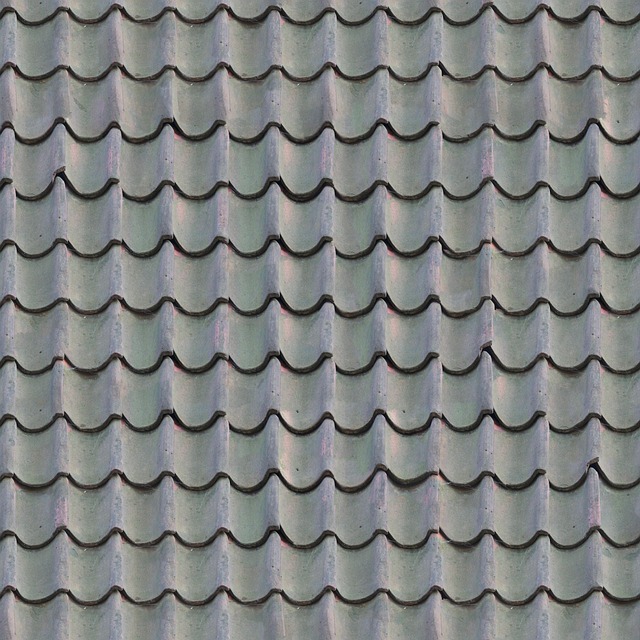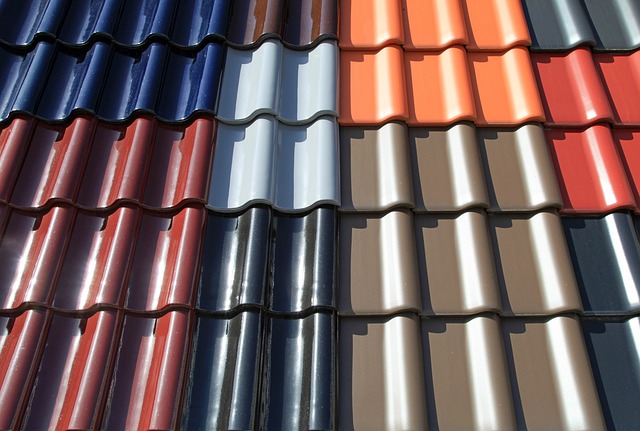Roof cracks, from tiny fissures to large splits, require understanding their causes for effective repair. Environmental conditions, poor installation, and material issues contribute to structural failures. Identifying crack types is crucial for choosing the right repair method. Minor cracks (less than 1/8 inch) are superficial and easily reparable; serious cracks (wider or angular) may compromise integrity. Safety gear is essential during repair. Tools include wire brushes, chisels, hammers, caulk, and plastic sheeting. For small cracks, clean the area and use silicon-based caulk. Larger cracks need specialized techniques like adhesives and metal brackets. Regular inspections, proper ventilation, and hiring licensed professionals prevent future damage. Prompt attention to wide or leaking cracks ensures structural integrity.
Roof cracks can range from minor aesthetic issues to serious structural problems. Understanding the causes and types of roof cracks is essential for effective repair. This article guides you through the process, from identifying damage to selecting the right gear, tools, and materials. We’ll walk you through step-by-step repairs for small cracks, offer complex solutions for larger ones, and provide maintenance tips to prevent future issues. Learn when it’s time to call a professional roofer for expert roof repair.
Understanding Roof Cracks: Causes and Types

Roof cracks can range from small, shallow fissures to large, deep splits, and understanding their causes is the first step in effective roof repair. These cracks often develop due to various factors, including environmental conditions like extreme temperatures, heavy snowfall, or intense sunlight, which can cause materials to expand and contract over time. Poor installation techniques, such as using subpar materials or incorrect flashing, can also lead to early structural failures.
There are several types of roof cracks, each requiring specific attention. For instance, hairline cracks typically appear in shingles or tiles and might be caused by normal age-related wear and tear. In contrast, larger cracks in the roof deck or underlayment usually result from more severe weather events or improper loading during construction. Identifying the type and cause of a crack is crucial for selecting the appropriate repair method to ensure long-lasting solutions for effective roof repair.
Assessing the Damage: Identifying Minor vs Serious Cracks

When assessing roof crack repair needs, it’s crucial to distinguish between minor and serious cracks. Minor cracks, often less than 1/8-inch wide and not extending through the entire thickness of the roof shingle or tile, are typically superficial and easy to fix. They can be caused by normal wear and tear or slight thermal expansion. Serious cracks, however, indicate more significant structural issues. These wider cracks, which may be deeper than 1/8 inch, can compromise the integrity of your roof, allowing water intrusion and potential damage to the underlying decking and insulation.
For accurate classification, inspect the crack’s length, width, and pattern. If it runs straight across the shingle or tile, it’s likely minor. Angular cracks or those that zigzag may signal a more serious problem, especially if they are wider at one end. In cases of doubt, consult with a professional roof repair service to ensure proper diagnosis and safe, effective roof crack repair solutions.
Safety First: Protective Gear for Roof Crack Repair

When it comes to roof crack repair, safety should always be the top priority. Before beginning any repairs, it’s crucial to equip yourself with the right protective gear. This includes sturdy gloves to shield your hands from sharp edges and debris, as well as a dust mask to prevent inhaling harmful particles that may become airborne during the repair process. Safety goggles are also essential to protect your eyes from potential falling objects or debris.
In addition to these basics, consider wearing long-sleeved clothing and pants to minimize exposure to harsh elements and to provide an extra layer of protection against sharp cracks and fragments. By prioritizing safety through proper protective gear, you not only safeguard yourself but also ensure that the roof crack repair process is effective and efficient. Remember, a secure and safe working environment is paramount in any roof repair endeavor.
Tools and Materials Required for the Job

When tackling a roof crack repair, having the right tools and materials is essential for a successful outcome. For this project, you’ll need a variety of items to ensure precision and effectiveness. Start with basic hand tools such as wire brushes, chisels, and hammers to clean and prepare the damaged area. These tools will help remove any loose debris or old sealant from the crack.
Additionally, gather essential materials like high-quality caulk or sealant designed for roof repairs, plastic sheeting, and possibly a heat gun (for softening and applying the sealant). Remember, proper protection is key; wear gloves and safety goggles to shield yourself from potential hazards. With these tools and materials in hand, you’re ready to tackle the roof crack repair and ensure your home’s structural integrity.
Step-by-Step Guide to Fixing Small Cracks

Fixing small cracks in your roof is a relatively straightforward task that can prevent further damage and maintain the integrity of your home’s protective barrier. Here’s a step-by-step guide to tackling this common Roof Repair issue:
1. Inspect and Assess: Start by thoroughly examining the crack to determine its severity and location. Small cracks, often caused by temperature changes or minor storms, can usually be repaired with simple tools and materials. Ensure you have all necessary equipment ready before beginning.
2. Clean the Area: Use a wire brush or power washer to clear debris from around and inside the crack. Removing dirt, loose particles, and even mold ensures that your repair is effective and long-lasting. Let the area dry completely before proceeding.
3. Prepare the Crack: Apply a thin layer of silicon-based caulk to fill the crack. Use a putty knife to smooth it out, ensuring complete coverage. Allow the caulk to cure according to the manufacturer’s instructions for optimal adhesion and durability.
Tackling Larger Cracks: A More Complex Approach

When dealing with larger cracks in a roof, the repair process becomes more intricate and may require specialized techniques. These extensive cracks can be caused by various factors, such as structural issues, extreme weather conditions, or age-related deterioration. To effectively fix these problems, homeowners or professionals should consider employing advanced methods tailored to their specific needs.
One common approach is to use specialized adhesives or sealants designed for roof crack repair. This involves carefully cleaning and preparing the crack, ensuring it’s free from debris and moisture. After application, the adhesive strengthens the crack, preventing further damage and providing a durable solution. For more severe cases, structural reinforcement might be necessary, which could include adding metal brackets or supports to stabilize the affected area, ensuring the roof can withstand additional stress until a complete replacement is feasible.
Preventing Future Roof Cracks: Maintenance Tips

Roof crack repair is not just about fixing existing damage; it’s also about preventing future cracks. Regular maintenance can significantly extend the lifespan of your roof and avoid costly repairs down the line. Start by inspecting your roof at least twice a year for any signs of wear and tear, including missing or damaged shingles, loose flashing, and, of course, cracks. Clearing debris from gutters and drains is crucial as clogging can lead to water damage, accelerating roof deterioration.
Additional tips include sealing all vents and openings to prevent water intrusion, ensuring proper ventilation to reduce heat build-up, and addressing any tree branches that could cause shade or damage to your roof. Using high-quality materials during repairs or replacements, and hiring licensed professionals, can also contribute to a more durable and resilient roof against future cracks.
When to Call a Professional Roofer

Roof cracks can be both an aesthetic and structural issue, so it’s crucial to address them promptly. While some minor cracks might be manageable with DIY methods, there are times when calling a professional roofer is essential for comprehensive roof repair. One red flag is when cracks extend beyond 1/8th of an inch (about 3 millimeters) wide, as these could indicate serious structural damage. Additionally, if you notice multiple or large cracks, water intrusion, or weak spots that cause concerns, it’s best to consult a professional.
Another reason to involve a roofer is the location and accessibility of the crack. If the roof is steep, has unusual angles, or is difficult to reach, attempting DIY repairs could be risky. Professional roofers have the necessary equipment and expertise to navigate these challenges safely, ensuring thorough and secure roof repair.
